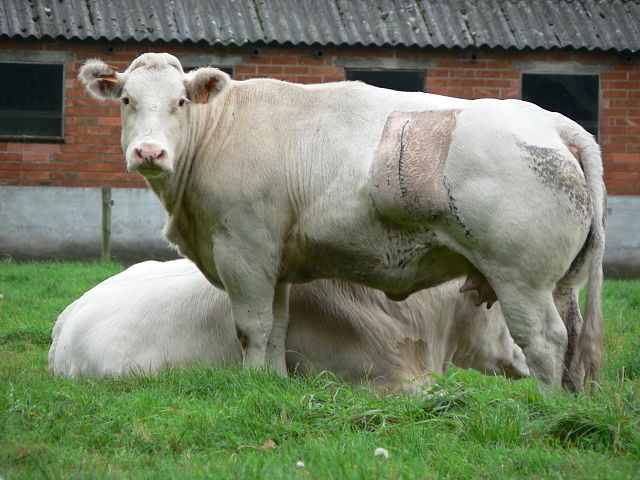A breed is a specific group of domestic animals having homogeneous appearance (phenotype), homogeneous behavior, and/or other characteristics that distinguish it from other organisms of the same species. In literature, there exist several slightly deviating definitions. Breeds are formed through genetic isolation and either natural adaptation to the environment or selective breeding, or a combination of the two. Despite the centrality of the idea of "breeds" to animal husbandry and agriculture, no single, scientifically accepted definition of the term exists. A breed is therefore not an objective or biologically verifiable classification but is instead a term of art amongst groups of breeders who share a consensus around what qualities make some members of a given species members of a nameable subset.
Braunvieh, a dairy breed with high milk production and little milk fat
Image: Vietnamese Pot Bellied Pig
Image: USDA ARS Meishan pig Cropped
Image: Pig USDA01c 0116
Selective breeding is the process by which humans use animal breeding and plant breeding to selectively develop particular phenotypic traits (characteristics) by choosing which typically animal or plant males and females will sexually reproduce and have offspring together. Domesticated animals are known as breeds, normally bred by a professional breeder, while domesticated plants are known as varieties, cultigens, cultivars, or breeds. Two purebred animals of different breeds produce a crossbreed, and crossbred plants are called hybrids. Flowers, vegetables and fruit-trees may be bred by amateurs and commercial or non-commercial professionals: major crops are usually the provenance of the professionals.
A Belgian Blue cow. The defect in the breed's myostatin gene is maintained through linebreeding and is responsible for its accelerated lean muscle growth.
This Chihuahua mix and Great Dane shows the wide range of dog breed sizes created using selective breeding.
Selective breeding transformed teosinte's few fruitcases (left) into modern maize's rows of exposed kernels (right).
Researchers at the USDA have selectively bred carrots with a variety of colors.








